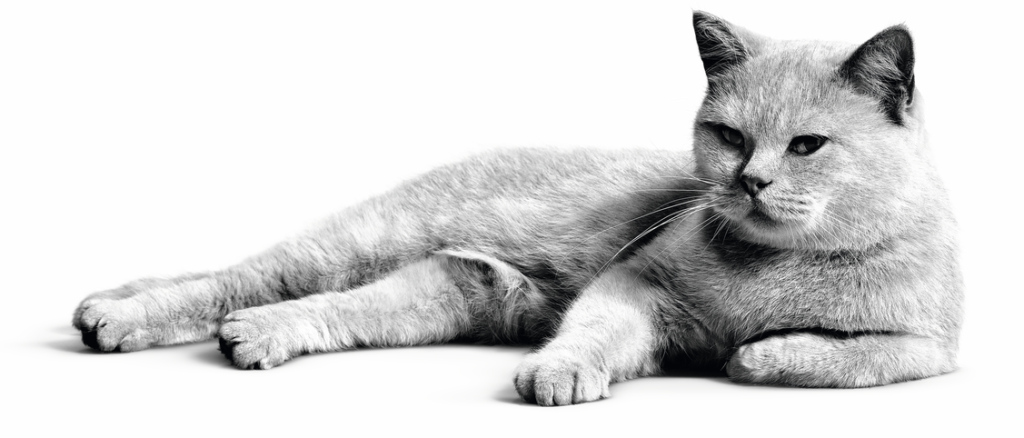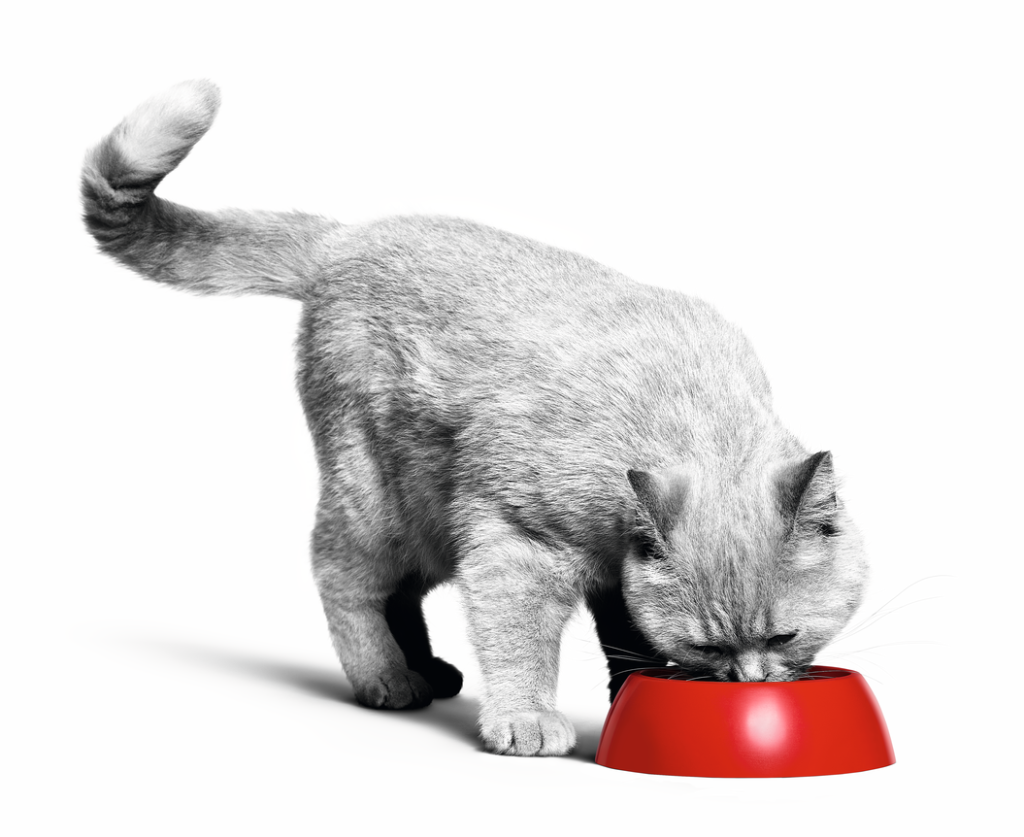If you’re concerned that your cat might be overweight or is over feeding, then we’ve got some tips to help you assess what to do next. We’ll also talk about what to do if your cat does need to lose weight.
Know your cat’s body condition score
Cats come in different shapes and sizes and at ROYAL CANIN® we appreciate that individuality. To assess each cat’s shape we use what is known as the Body Condition Score (BCS) technique. This 9 point scale can help to identify if a cat is underweight, at an ideal weight, overweight or obese. To use this technique you need to check for three things:
- Being able to easily feel the cats ribs using a feather light touch.
- Seeing and feeling the definition of the waist.
- Seeing and feeling the definition of the abdominal (tummy) tuck.
You can compare your findings to the descriptions on our chart. For more information on BCS you can also click here.
Here are a few more tips:
1. Talk to your vet about obesity.
If your cat is very overweight or obese and needs to lose more than about 10% of its current bodyweight to get back in shape, please do contact your vet for advice before changing anything at all.
Your vet can tailor the best nutritional solution to ensure the optimal health of your pet.
Very overweight cats are at risk of losing weight too rapidly, which may adversely affect their health. Therefore they will need very close veterinary supervision when going on a weight-loss regime.
2. Remember to weigh out your cat’s food at every meal.
Cats require relatively small portions, making it very easy to overfeed by a large percentage unless you are very accurate with your portion control.
Using digital scales offers the most accurate solution; measuring cups (although popular) are not recommended.
3. If your cat is greedy at meal times, split their meals into at least 2 or 3 smaller daily rations.
This will help keep them feeling full and also help to keep their hunger pangs at bay for longer. The digestive process itself also burns calories, so the greater the number of small meals your cat has per day (as opposed to one much larger meal), the more energy they will use in digesting their food.
Many cats graze throughout the day anyway but for those that don’t, splitting meals is a way of encouraging them to adopt this behaviour.
4. Exercise is important.
Encourage your cat to exercise by instigating multiple, short, well-supervised play sessions with them every day.
We’ve answered two questions on this topic – read our answers about playing with your cat and the amount of exercise cats need.
5. Don’t let treats become a problem.
If you must treat your cat, remember to cut down on the size of the treat and also to cut down on the size of their main meals accordingly.
Why not treat them with kibbles taken from their allocated daily allowance or reward them with a toy or through play instead?
6. Remember, the feeding guide on your cat’s food is just that – a guide only.
Some cats will need significantly less than the guide states and some will need more. For adult cats, check your pet’s weight regularly (ideally once a month) to ensure it remains stable on what you are feeding them.
If your pet’s weight is changing frequently, adjust the amount you are feeding them by about 5% (under your vet’s guidance), until their weight remains relatively stable at every weigh-in.
7. Never embark a growing cat on a weight-loss regime without first speaking to your vet.
There’s not much else to say here – when it comes to your cat’s health, it’s always worth checking with your vet.